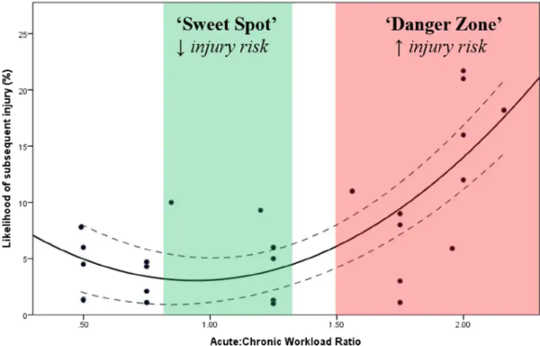The COVID-19 pandemic has made many of us reevaluate our health and take up new exercise regimes. Running and cycling have become increasingly popular as activities that can be carried out by most people without much equipment, while observing social distancing.
There are, of course, a wealth of benefits to cycling and running, but a sudden change in activity levels can put people at increased risk of injury. Muscles, tendons and bones all need time to adapt to increases in activity. And if too much stress is applied strains, tears and even bone injuries – such as stress fractures – can occur.
This shock to the tissues often leads to painful conditions, can thwart people’s well-intentioned plans to exercise and may lead to long-term injury. This can happen anywhere in the body – particularly if you suddenly decide to play two hours of tennis, take an extra-long yoga class or go out for an extra-long run after months of decreased activity.
Injury risk and training loads
Your training should maximise health outcomes while limiting negative consequences, such as injury, illness or fatigue. So how do you know if you are doing too much?
Get The Latest By Email
This is where the concept of training loads comes in – which is essentially the impact your training has on the body. Training loads can be affected by lots of things and include factors like how far you run, how long you spend doing yoga or the intensity of your zoom boxercise class.
 It is possible to do too much exercise. pio3/Shutterstock
It is possible to do too much exercise. pio3/Shutterstock
To start off, it’s important to think about the amount of energy your new exercise regime requires. This is because the energy available to the human body is like currency – there is a finite supply. And it’s the brain’s job to prioritise how this energy is spent.
Tissues and organs that keep us alive need a constant energy supply and so take priority. The rest of the energy can then be distributed between other bodily functions such as physical activity, mental stress, healing and recovery.
Excessively demanding exercise regimes that don’t allow time for adequate recovery demand high volumes of energy, and this can leave you with an “energy debt”. This is when there is a lack of energy to support the recovery, healing and adaptation of muscles, tendons, the heart, blood vessels and the brain. This puts your body at increased risk of injury.
How to avoid overload
For many, lockdown has been a fantastic opportunity to incorporate regular exercise into their lifestyle and the benefits of this should not be underestimated. But, of course, while it’s generally believed that when it comes to exercise more is better, there can be too much of a good thing.
To try to reduce your risk of injury it’s important to track and analyse your average daily workload. This should be over the course of a week that you can then compare to the previous four weeks This could be in distance or time and is referred to as the acute:chronic workload (ACWL).
There are two methods to analysing the ACWL – one method is to calculate the percentage difference of the most recent week workload average (acute workload) compared to the past four weeks workload average (chronic workload). The second method divides the one-week acute workload by the four-week chronic workload to provide a ratio. This is known as the acute:chronic workload ratio (ACWR).
To reduce the risk of injury, it’s recommended that novice athletes keep any increase in load within a 5% margin over the course of the month. This could extend to a 10% increase for more experienced or higher-performing athletes.
If using the ACWR method, the recommendation is to keep the ratio in the sweet spot between 0.8 and 1.3 and avoid the danger zone of greater than 1.5, as shown in the graph below.
 Figure 1. The U Shape relationship between ACWR and injury risk.
Figure 1. The U Shape relationship between ACWR and injury risk.
The table below shows three examples of both methods with a traffic light system of green for ideal, amber for borderline – with a relatively higher risk of injury – and red for the highest risk.
 Table 1. Example workloads.
Table 1. Example workloads.
It’s also important to consider the intensity of your workouts and where possible use your heart rate as a guide to drive a mixture of low- and high-intensity exercise over the course of a week.
You should aim for around four to five low-intensity workouts for every high-intensity workout. This is the training practice of most elite athletes across multiple sports. This allows for better recovery from intense workouts which probably contribute to consistency of training and reduced risk of injury.
Wearable tech, such as Apple watches, Fitbits, Garmin devices, along with apps such as Strava and Runtastic, are also fantastic tools to help you monitor your activity levels and help manage training loads.![]()
About The Authors
Paul Millington, Lecturer in Physiotherapy, University of Bradford; Ally Briggs, Lecturer in Sport and Exercise, University of Bradford; Colin Ayre, Lecturer in Physiotherapy, University of Bradford, and Jamie Moseley, Clinical Lead and Lecturer in Physiotherapy, University of Bradford
This article is republished from The Conversation under a Creative Commons license. Read the original article.
books_fitness








